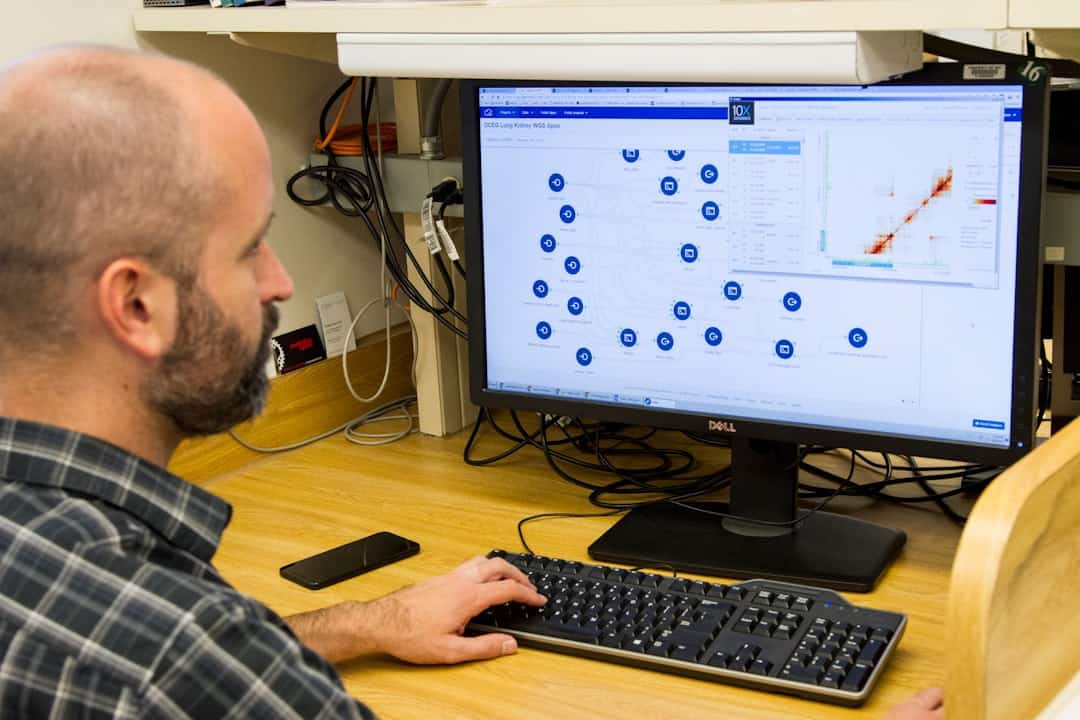The rise of virtual socializing and events has become increasingly prevalent in recent years, particularly due to the global pandemic necessitating social distancing measures. Virtual socializing enables individuals to connect with friends and family remotely using platforms such as Zoom, Skype, and FaceTime. These digital gatherings have become essential for many, providing a sense of connection and community during periods of physical isolation.
People have devised creative ways to maintain their social lives, including virtual birthday celebrations and online game nights. Virtual events have also emerged as a popular alternative to in-person gatherings. Concerts, conferences, and even weddings have been successfully hosted online, allowing global participation.
These events offer increased accessibility by eliminating travel and accommodation expenses. While virtual events may not fully replicate the experience of physical attendance, they have proven to be a valuable and convenient option for many participants. The growth of virtual socializing and events has introduced new methods for people to connect and engage with others, regardless of geographical distance.
As technology continues to advance, it is anticipated that virtual socializing and events will become increasingly immersive and interactive, further enhancing the overall experience for participants.
Key Takeaways
- Virtual socializing and events have become more popular due to the limitations on in-person gatherings, providing a way for people to connect and engage with each other from a distance.
- Virtual shopping and commerce have seen a significant increase in activity, with more people turning to online platforms to make purchases and support businesses during the pandemic.
- Virtual work and collaboration have become the new norm for many industries, with remote work and digital communication tools being essential for maintaining productivity and teamwork.
- Virtual entertainment and gaming have experienced a surge in popularity, offering people a way to escape and have fun while staying at home.
- Virtual learning and education have adapted to the digital landscape, with online classes and e-learning platforms becoming essential for students and professionals to continue their education and skill development.
Virtual Shopping and Commerce
The Rise of Immersive Shopping Experiences
In addition to traditional online shopping, virtual reality (VR) technology has also begun to transform the shopping experience. VR allows consumers to virtually explore stores and products, providing a more immersive and interactive shopping experience. This technology has the potential to revolutionize the way people shop, offering a level of engagement that traditional online shopping cannot match.
Venturing Beyond Traditional Retail
Virtual commerce has also expanded beyond traditional retail, with the rise of virtual marketplaces and digital currencies. Cryptocurrencies such as Bitcoin have gained popularity as a form of virtual currency, allowing for secure and decentralized transactions. Virtual marketplaces such as OpenSea and Decentraland have also emerged, offering a platform for buying, selling, and trading virtual assets such as digital art and virtual real estate.
A New Era of Convenience and Accessibility
The rise of virtual shopping and commerce has transformed the way people buy and sell goods and services, offering convenience, accessibility, and new opportunities for businesses and consumers alike.
Virtual Work and Collaboration

The shift towards virtual work and collaboration has been accelerated by the global pandemic, with many companies adopting remote work policies to ensure the safety of their employees. Virtual work allows employees to work from anywhere with an internet connection, providing flexibility and work-life balance. Platforms such as Slack, Microsoft Teams, and Zoom have become essential tools for virtual collaboration, enabling teams to communicate and collaborate effectively regardless of physical distance.
In addition to remote work, virtual collaboration has also become essential for businesses working with global teams and partners. Virtual meetings, project management tools, and cloud-based collaboration platforms have made it easier than ever for teams to work together across different time zones and locations. This level of connectivity has opened up new opportunities for businesses to collaborate on a global scale.
The rise of virtual work and collaboration has transformed the way businesses operate, offering flexibility, efficiency, and accessibility. As technology continues to advance, we can expect virtual work and collaboration to become even more seamless and integrated into the way we work.
Virtual Entertainment and Gaming
Virtual entertainment and gaming have become increasingly popular, offering immersive experiences that transport users to new worlds and adventures. Virtual reality (VR) technology has revolutionized the gaming industry, allowing players to fully immerse themselves in virtual environments. VR gaming has become a popular form of entertainment, offering a level of interactivity and engagement that traditional gaming cannot match.
In addition to VR gaming, virtual entertainment has expanded to include virtual concerts, events, and experiences. Platforms such as Oculus Venues and Sansar have hosted virtual concerts and events, allowing users to attend from anywhere in the world. This level of accessibility has opened up new opportunities for artists and performers to reach a global audience.
The rise of virtual entertainment and gaming has transformed the way people experience entertainment, offering new levels of immersion and interactivity. As technology continues to advance, we can expect virtual entertainment and gaming to become even more realistic and engaging, further blurring the lines between the virtual and physical worlds.
Virtual Learning and Education
Virtual learning and education have become increasingly popular, offering students the opportunity to access educational resources from anywhere in the world. Online learning platforms such as Coursera, Udemy, and Khan Academy have made it easier than ever for individuals to access a wide variety of courses and educational materials. Virtual classrooms and video conferencing tools have also become essential for schools and universities, allowing students to participate in classes remotely.
In addition to traditional online learning, virtual reality (VR) technology has begun to transform the education experience. VR allows students to immerse themselves in educational environments, providing a more interactive and engaging learning experience. This technology has the potential to revolutionize the way students learn, offering new opportunities for hands-on learning and exploration.
The rise of virtual learning and education has transformed the way people access educational resources, offering flexibility, accessibility, and new opportunities for learning. As technology continues to advance, we can expect virtual learning and education to become even more immersive and interactive, further enhancing the overall learning experience for students.
Virtual Real Estate and Property

Virtual real estate and property have emerged as a new frontier in the world of real estate, offering opportunities for investment and exploration in virtual worlds. Virtual real estate refers to digital land or property within virtual environments such as Decentraland or Second Life. These virtual worlds allow users to buy, sell, and develop virtual properties using digital currencies such as Ethereum.
In addition to virtual real estate within digital worlds, augmented reality (AR) technology has also begun to transform the real estate industry. AR allows users to visualize properties in real-world environments using their smartphones or AR glasses. This technology has the potential to revolutionize the way people search for and experience real estate properties.
The rise of virtual real estate and property has opened up new opportunities for investment and exploration in digital environments. As technology continues to advance, we can expect virtual real estate and property to become even more integrated into our daily lives, offering new opportunities for creativity and innovation in the world of real estate.
Virtual Healthcare and Wellness
Virtual healthcare and wellness have become increasingly popular, offering patients the opportunity to access medical care from anywhere with an internet connection. Telemedicine platforms such as Teladoc and Amwell have made it easier than ever for patients to consult with healthcare providers remotely. Virtual healthcare offers convenience and accessibility for patients who may not have access to traditional healthcare services.
In addition to telemedicine, virtual wellness platforms have also emerged, offering a wide variety of fitness classes, meditation sessions, and wellness resources online. These platforms allow users to access wellness services from anywhere in the world, providing flexibility and convenience for maintaining a healthy lifestyle. The rise of virtual healthcare and wellness has transformed the way people access medical care and wellness resources, offering convenience, accessibility, and new opportunities for maintaining health and well-being.
As technology continues to advance, we can expect virtual healthcare and wellness to become even more integrated into our daily lives, offering new opportunities for personalized care and support for patients.
If you’re interested in exploring the economic and social impacts of the metaverse, you should check out the article “Metaverse and the Real World: Economic and Social Impacts.” This article delves into the challenges and opportunities for businesses and provides a comprehensive perspective on the economic and social implications of the metaverse. It’s a great read for anyone looking to understand the potential of the metaverse in the real world.
FAQs
What is the metaverse?
The metaverse is a collective virtual shared space, created by the convergence of virtually enhanced physical reality and physically persistent virtual reality.
What can be done in the metaverse today?
In the metaverse today, users can engage in various activities such as socializing, gaming, attending virtual events, shopping, creating and trading digital assets, attending virtual concerts, and exploring virtual worlds.
How do people access the metaverse?
People can access the metaverse through various virtual reality (VR) platforms, augmented reality (AR) applications, and online virtual worlds. These platforms and applications allow users to immerse themselves in the virtual environment and interact with others.
What are some popular metaverse platforms?
Some popular metaverse platforms include Second Life, Decentraland, Roblox, VRChat, and Fortnite. These platforms offer different experiences and opportunities for users to engage in various activities within the metaverse.
Can businesses operate in the metaverse?
Yes, businesses can operate in the metaverse by setting up virtual storefronts, hosting virtual events, and engaging with customers in virtual environments. Some companies are already exploring the potential of the metaverse for marketing, sales, and customer engagement.











Leave a Reply